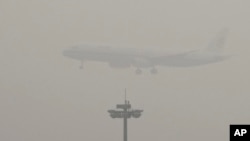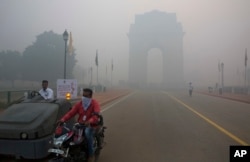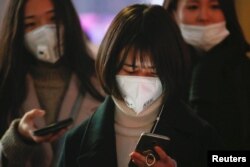China has been engulfed in the worst smog of the year for the past few days and more than 70 cities have declared either red or orange alerts for air pollution.
The poor air quality has prompted the government to order factories shut down, restrict driving and close schools in worst-hit cities - including the capital city of Beijing. The restrictive measures, which went into effect as early as last Friday, won’t be lifted until Thursday when stronger winds are expected to help disperse the pollutants.
While some in China agree unfavorable weather may have triggered the six-day smog cloud, many more are asking: has the government done enough to tackle the nation’s air pollution problem?
World’s worst haze
As of late Wednesday, Beijing remained the world’s worst polluted city with an air quality index (AQI) of 434, according to AirVisual – a real-time air quality monitor.
Some studies have shown that breathing that much pollution on any given day may reduce one’s life span by about eight hours.
Dhaka, Bangladesh followed at 238 and India’s Kolkata at 235 while Chengdu in China's Sichuan province and Guangzhu, in Guangdong province made AirVisual’s list of top ten worst polluted cities in the world with respective AQI's of 211 and 156.
Overall, the sky across China has been in dark red on AirVisual Earth’s world pollution map for days as opposed to healthy green indicators flashing in neighboring countries.
“Right now, the weather has a big impact on the air quality in China. So, you see, there’s a big indigo color all over China. That’s going to disappear tomorrow [Thursday], but right now, this is something that is pretty bad,” Yann Boquillod, founder of AirVisual, told VOA, adding the AQI in China has averaged above 300 in the past few days.
Many Beijingers have complained that heavy smog has reduced local visibility to less than 50 meters. Such poor visibility has led to the cancellation or delay of hundreds of flights, and the stalled the delivery of up to 50 million parcels, according to local media.
Rising health risk
The awful state of air pollution in China has worried many health-conscious citizens. On Weibo, China’s Twitter-like social media, a user named Chang-rui wrote “[Let’s expect] the outbreak of lung cancers in 10 years.” In response to his comments, others were even more pessimistic.
One user said “It won’t take that long. In three to five years, I’d say.”
Another user added “I’ve taken out the critical illness insurance” while one shared that “My best friend, who went to college in Shijiazhuang [the capital of Hebei province], has already been diagnosed with leukemia and returned home in Chongqing for treatment.”
Many more Weibo users questioned if the government has shown enough teeth in enforcing its bans as some wrote “the nation’s [pollution control] laws and regulation as well as the enforcement hasn’t been in the right place.”
For example, the city of Shijiazhuang still sent pupils to school even as its smog readings have gone off the scale from time to time, local media reported.
State media Xinhua also cited an official in Henan province as suspecting that nearly 4,000 factories in the province haven't stopped or limited their production since the records of their power consumption have shown little change.
The Ministry of Environmental Protection said Monday that it only found “a small number of business” that hadn’t taken the bans seriously and continued their operation. But more than 100,000 drivers in Beijing had been given fines for having violated the traffic bans, the ministry’s press statement added, with no updates.
Insufficient awareness
The fact that so many people in China were still taking their chances during the worst smog crisis indicated the need to enhance the general public’s awareness of air pollution, said Ma Yongliang, professor of Tsinghua University’s school of environment.
The professor, however, deemed the government’s restrictive measures a short-term cure that won’t put an end to the nation’s pollution problems.
“In the long run, the pollution problem can only be eased by adjusting the country’s industrial structure, or accelerating the upgrading of [polluting] industries so as to cut down the emission sources of pollutants,” Ma said.
Overall, the professor lauded the government’s efforts, which he said have paid off as China, on a national level, has seen improvements in cutting carbon-dioxide emissions in recent years after it kick-started an action plan in 2013.
But the increased use of coal in winter for heating homes, especially in rural areas, could pose a bigger headache for the government to tackle when the pollution deteriorates in winter, the professor warned. That, he added, will be another pressing issue as the government hasn’t been able to find a cleaner alternative energy.










